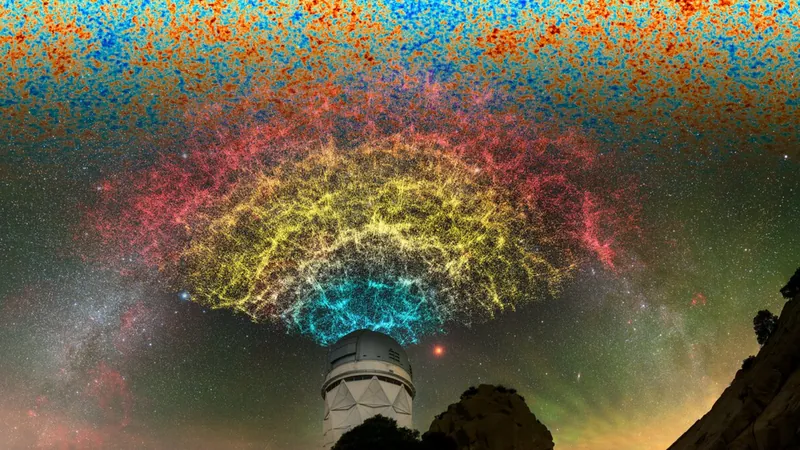
Own a Piece of the Universe: 4.5 Billion-Year-Old Iron Meteorite Up for Auction!
2024-11-20
Author: Jacob
Introduction
Looking for an extraordinary gift this holiday season? How about a genuine piece of the cosmos? An iron meteorite, believed to be a staggering 4.5 billion years old, is set to go under the hammer at Lunds Auctioneers and Appraisers during their Top Notch auction taking place on December 10.
Discovery and Significance
Discovered in the backyard of a home in Ocean Falls, British Columbia, during the 1960s, this meteorite is considered a remarkable find—older than any object you would ever encounter on Earth. Christopher Herd, a prominent meteorite expert and professor at the University of Alberta, notes that this specimen originated from the primordial materials that formed our solar system.
Auction Details
Lunds Auctioneers has estimated that the meteorite could fetch anywhere from $20,000 to an astonishing $100,000, reflecting a growing trend among collectors and enthusiasts who want to display meteorites as unique art pieces.
Export Regulations
However, potential buyers should tread carefully: exporting meteorites from Canada requires an export permit, as they are classified as cultural property by the federal government. In certain cases, owners might be allowed to take part of the meteorite abroad while donating a fragment to a Canadian institution.
Uniqueness of the Meteorite
This iron meteorite is particularly special, as it holds the distinction of being the only one found in British Columbia and the fifth of any kind identified in the province. Herd describes the discovery as "incredibly fortunate," given the mountainous terrain of B.C., which drastically reduces the likelihood of finding such specimens.
Meteorite Distribution in Canada
Interestingly, Alberta claims the title for the most meteorites in Canada. Herd explains that this is mainly due to the province's wide-open ranching and farming spaces, making it easier for meteorites to be spotted after falling or to be unearthed by agricultural activities. Many individuals mistakenly believe they have found meteorites, but in most cases, they have not.
Scientific Classification
Scientifically, the Ocean Falls meteorite is classified as an iron meteorite with a small trace of nickel and other elemental traces. For a meteorite to be officially recognized, it requires classification and analysis by an expert, a process initiated by the original owners who provided a piece for study; this portion is now part of the University of Alberta's meteorite collection.
Physical Characteristics
Weighing in at a hefty 19.23 kilograms (42 pounds), this meteorite is thought to have originated from the metal-rich asteroids located in the belt between Mars and Jupiter. When collisions occur in that asteroid belt, fragments can be propelled into orbits that intersect Earth’s path, eventually landing as meteorites.
Future Speculations
Interestingly, the visible rust on the meteorite suggests it may have been resting on Earth for hundreds, if not thousands, of years. Scientists are still pondering whether this specimen was a solitary fragment or part of a larger mass that met its end on our planet while the rest fell into the ocean.
Conclusion
If you're curious to see this remarkable piece of cosmic history, mark your calendars for December 10, and prepare to bid on what could be the ultimate holiday gift—a legitimate artifact from the universe itself!









 Brasil (PT)
Brasil (PT)
 Canada (EN)
Canada (EN)
 Chile (ES)
Chile (ES)
 España (ES)
España (ES)
 France (FR)
France (FR)
 Hong Kong (EN)
Hong Kong (EN)
 Italia (IT)
Italia (IT)
 日本 (JA)
日本 (JA)
 Magyarország (HU)
Magyarország (HU)
 Norge (NO)
Norge (NO)
 Polska (PL)
Polska (PL)
 Schweiz (DE)
Schweiz (DE)
 Singapore (EN)
Singapore (EN)
 Sverige (SV)
Sverige (SV)
 Suomi (FI)
Suomi (FI)
 Türkiye (TR)
Türkiye (TR)